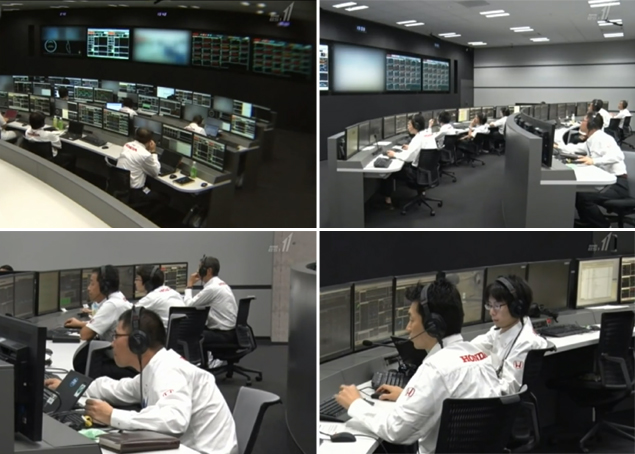ENGINE SUPPLIERS ALSO HAVE THEIR OPS ROOMS
Located in Viry-Châtillon, south of Paris, Renault Sport F1’s factory also has its own operations rooms where at least eight people are on duty from one hour before the start of FP1 until the end of FP3 on Saturday. Poring over the data, the engineers remain in permanent contact with the track operations to help them address any issue being raised. Their findings are then forwarded to the relevant departments and people within the factory that will provide more in-depth analysis. Following Renault’s takeover of Lotus, Viry and Enstone’s control rooms will resume their close association in 2016.
Engine dynos are also used to assist trackside personnel throughout a race weekend. At least one dyno is running all Friday long, depending on the team’s needs. For instance, an engine map or software change can be tested at Viry before the results are sent and incorporated into the items list of Renault engineers working on site.
The other engine dynos are used to validate new developments but should a problem or emergency arise at the circuit, the ‘Dyno’ department can quickly put together a testing programme and mobilise more engineers and dynos.
Just like their Renault counterparts, Honda’s engineers can monitor all engine settings – temperatures, turbo boost, rotational speed of the MGU-H, etc. – from the Japanese manufacturer’s control room located in its Sakura R&D facility.
F1 operations rooms are formidable tools for decision support, but perhaps also symbols of a sport where human input is gradually decreasing. Purists may find solace in the fact that these only provide theoretical assistance and never replace on-site presence. Despite its endless possibilities, virtual reality – an oxymoron of epoch defining significance – also has its limits.
Feature: What happens on any given F1 Saturday?








